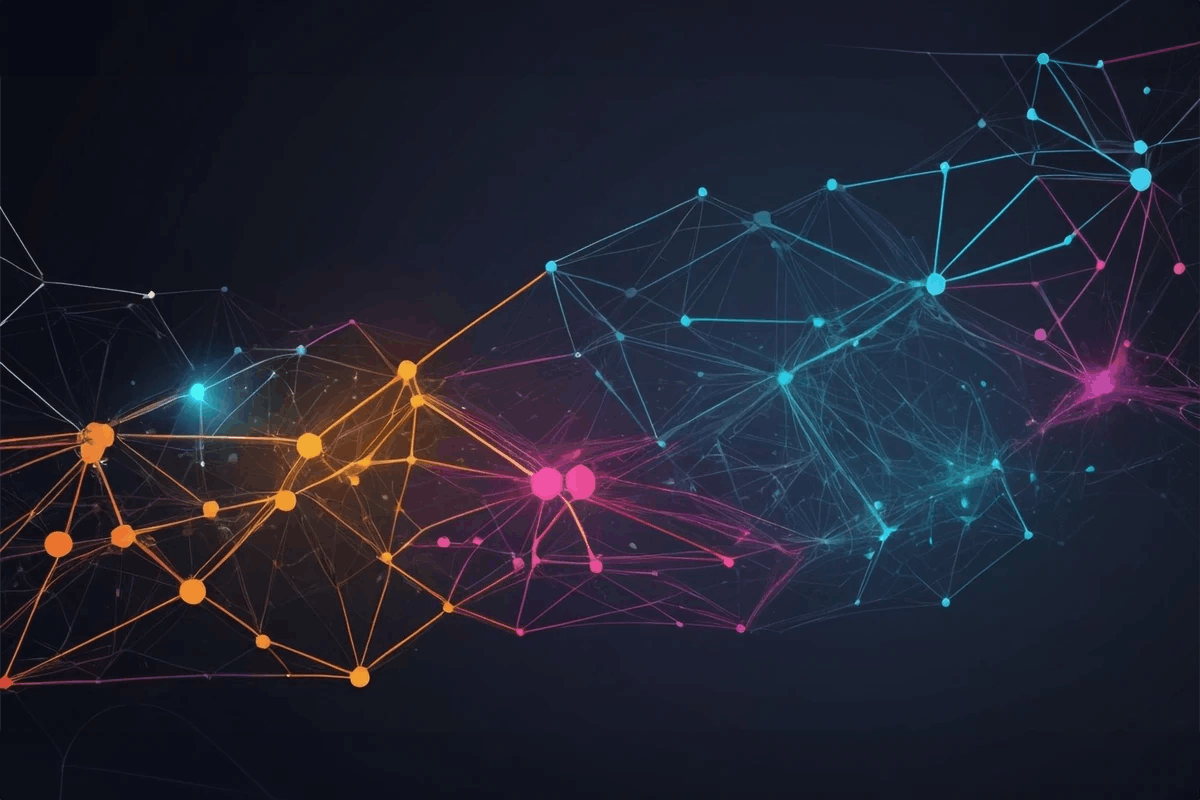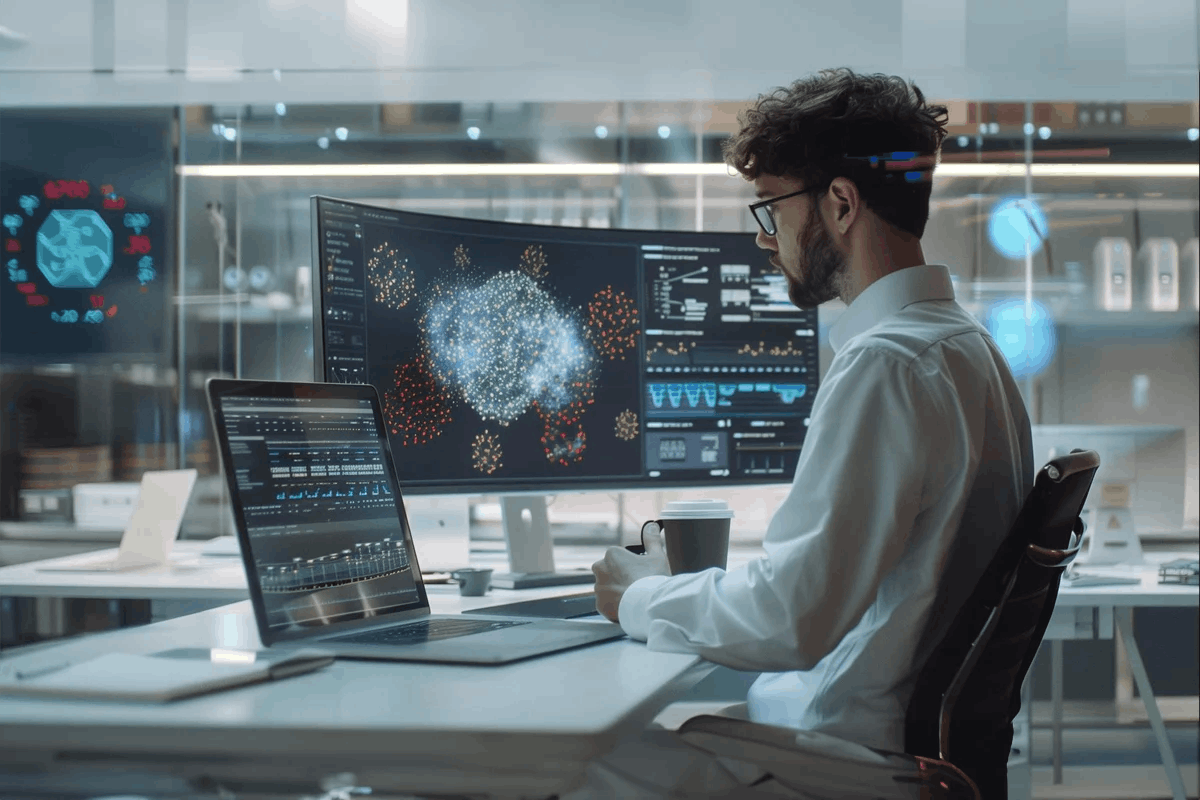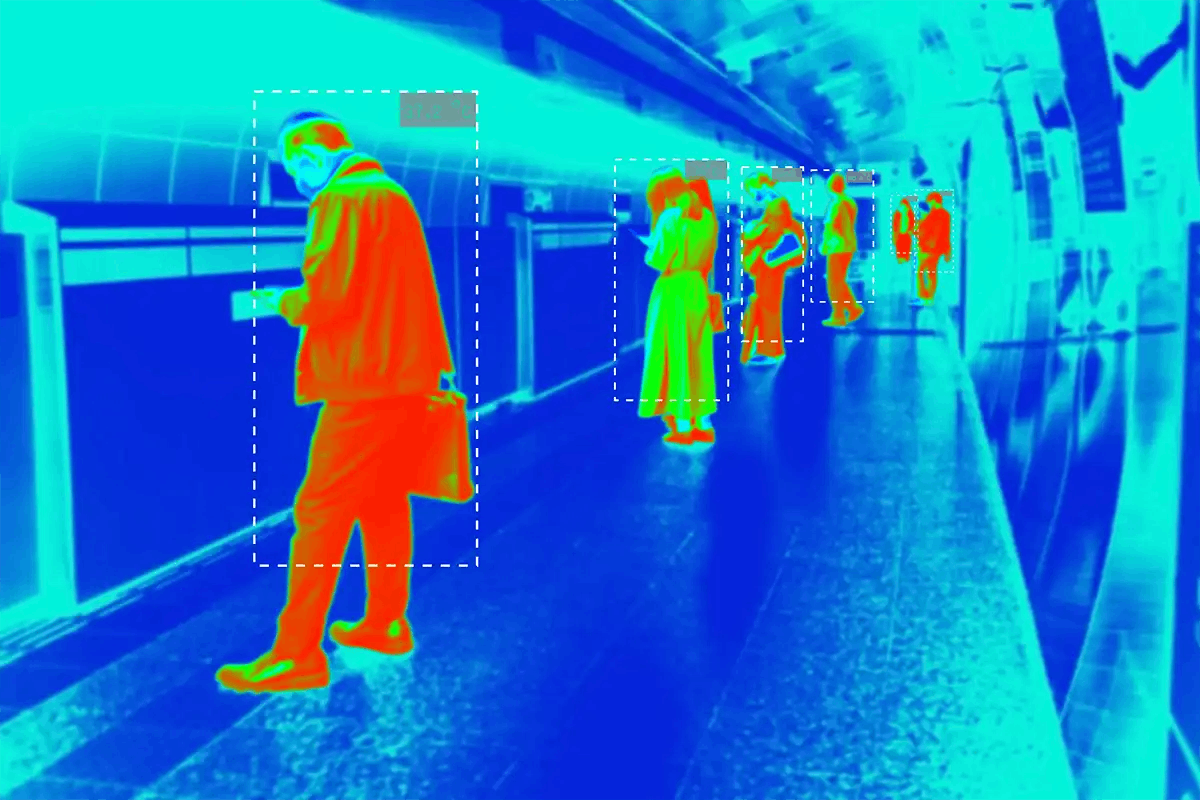
,
Have you ever noticed how machines are getting more competent at recognizing stuff around them? That's all thanks to AI and real-time processing changing the game in object detection. We're explaining computer vision tech in this blog, breaking down the stuff, and showing you the latest and greatest in this area. It's all about computer vision meeting AI technology, and trust me, it's making waves in tons of industries.
This article is like your friendly guide through real-time analysis and object detection. We'll untangle the techy talk and show you how these systems work. AI's shaking things up, and it's wild to see where it's going. We're not just chatting about tech here. Let's dive into how AI is growing by leaps and bounds, especially with object detection systems. Picture self-driving cars or high-tech security cameras – that's where this stuff sparkles.
But what's around the corner? What exciting innovations might AI bring us in the coming years? That's what we're here to explore. Let's look at what's coming next in this super cool world of AI tech. How's AI going to kick it up a notch? Stick around, and we'll walk you through it all, whether you're just curious or super into the AI and object detection scene.
Historical Context and Evolution
Real-time object detection systems use machine learning to identify and track objects in images or videos instantly and accurately. Let's casually stroll through the history of Real-Time object detection systems. It's like going back in time to see how it all started. In the beginning, object detection was basic. We're talking slow computers and not-so-great accuracy. But then, Machine Learning and Neural Networks came along, and things started changing quickly.
Think of it like this: in the old days, these systems were like trying to do a puzzle with half the pieces missing. But now, they're like super-smart robots that can spot and track stuff in real-time. This is a big deal for businesses that can't afford to mess up or be slow. If you're not using these fancy systems, you might miss out big time or make mistakes that could cost you.
The real game-changer was Machine Learning and Neural Networks. They turned these systems from one-trick ponies into smart, adaptable tools that can handle all sorts of complex situations. It's like to transitioning from a simple flip phone to a sophisticated smartphone.
So, why should you care, especially if you're running a business in the USA? Let's break it down super simple: Staying up-to-date with this tech? Super important. If you keep up with these tremendous advancements, you'll catch up in this fast-paced tech world. Getting the hang of real-time object detection? That's your ticket to growing and beating the competition.
Core Technologies and Algorithms
- Deep Learning and Neural Networks
In the world of spotting things in real-time with tech, Deep Learning, and neural networks are the big players. They're not just fancy terms but changing how machines see and understand stuff. For the big bosses, like CEOs and CTOs, it's important to know what's up with these techs. Deep Learning is part of Machine Learning, and it works like our brains do, making quick and smart decisions on the fly. - Convolutional Neural Networks (CNNs)
CNNs are a specific type of neural network that can pick out picture details. They can tell different parts of an image apart, which is handy for recognizing objects. What's cool about them is they get better over time, making them more accurate the more they learn. They're getting good at handling complex images, which is a big plus for businesses using AI. - YOLO and SSD
Regarding specific algorithms for spotting objects, YOLO and SSD are the names to remember. YOLO, which stands for 'You Only Look Once,' is all about speed. It looks at an image once and quickly figures out what's in it. SSD, or Single Shot MultiBox Detector, finds a balance between being quick and accurate and identifying objects of all shapes and sizes. These algorithms are constantly improving, making them more effective in different situations.
If businesses don't use this kind of real-time object detection, they could be missing out big time, especially in areas where being fast and accurate matters a lot. In today's techy world, keeping up with these advancements isn't just an advantage; staying competitive and ready for the future is a must. For corporate leaders, getting on board with these AI and machine learning advancements is more than smart; it's essential for staying ahead and growing.
Innovative Stuff in Real-Time Object Detection
The world of spotting things super-fast with tech is always changing, thanks to some cool technologies and methods. Business operators need to stay abreast of these evolving trends to fully leverage the benefits of AI.
- Edge Computing
This is about processing data right where it happens instead of sending it far away. It's fast and great for stuff where time matters, like self-driving cars or keeping an eye on security cameras. - Real-Time Analytics
This is all about making sense of data right as it comes in. It is useful for quick decisions in busy places, like managing traffic or handling emergencies. - AI Accelerators
Consider these as turbo boosts for AI calculations, especially when you need to be quick. They make object detection systems faster and more dependable. - Model Efficiency
As AI gets more complex, keeping it fast and accurate without using too much power is challenging. Improving this efficiency means AI can do its job well without draining resources. - Cool New Developments in Object Detection
There's always something new in object detection, thanks to tech upgrades and fresh ideas in algorithms. Systems are getting even better at spotting and understanding stuff in different situations. - Real-Time Processing Techniques
These techniques are key for dealing with heaps of data on the spot. They help systems make sense of and react to what they see immediately, which is a big deal in things like medical imaging or keeping track of store inventory. - AI Optimization Strategies
These are all about tuning AI systems to work their best in real-time detection, ensuring they're fast, accurate, and don't need too much computing power.
Using these new tech ideas isn't just about being cutting-edge; it's about totally changing what your business can do. As these real-time object detection systems get better, they're opening up extraordinary new ways to make different kinds of companies more efficient and creative.
Applications in Different Industries
Real-Time Object Detection Systems are being used in all sorts of businesses, totally changing how things are done. For the big bosses and decision-makers, getting how this stuff works can open up ideas for bringing AI into their game plan.
- Autonomous Cars
Think of self-driving cars as super smart vehicles that have eyes everywhere. They use this tech to spot other cars, people, traffic lights, and road signs. It's like they're constantly checking out what's around them to make quick decisions, like stopping or turning. This is super important for making sure these cars are safe and don't run into anything. It's like they're learning to drive better than us, getting us closer to a future where cars do all the driving. - Security Cameras
Security cameras are getting a major upgrade with this tech. They're not just recording what's happening, they're smart enough to spot something odd or risky, like someone sneaking around. This means they can quickly tell security folks if something's up, way faster than a person could. It's making places like malls, streets, and even our homes safer, and helping catch bad guys quicker. - Healthcare Imaging
In hospitals, this tech is like a super-fast helper for doctors. When they're looking at scans and X-rays, the AI helps them spot problems like tumors or broken bones in a jiffy. It's not just quick; it's also super precise, so doctors can trust what they're seeing. This means they can figure out what's wrong faster and start treating patients sooner. It's a big deal for making healthcare quicker and more on point. - Retail Analytics
In stores, this tech is like a secret helper for keeping track of everything. It watches which products are popular and which aren't, helping stores stock up just right. So, this tech in stores is like having an extra set of eyes watching out for shoplifters, which helps stop theft. Also, it's pretty smart at figuring out what shoppers are into. This means stores can make shopping more fun and personal for everyone. It's all about making stores work better and keeping us, the customers, happy.
Using real-time object detection systems in different industries shows how flexible and powerful AI tech is. This tech can boost how well they work, keep things safe, and make customers happy for businesses that want to be top-notch in the digital world. And as these systems keep improving, they're opening up new chances for businesses to do even more awesome stuff.
Challenges and Limitations
Despite the remarkable advancements in Real-Time Object Detection Systems, there are several challenges and limitations that businesses, particularly those in the technology sector, need to consider:
- Data Privacy
When these systems check out stuff, they deal they're with a lot of personal info. Keeping this info safe is a big deal. Companies need to be careful and follow rules about data privacy. - System Latency
Sometimes, there's a lag between when the system sees something and reacts. Cutting this delay is key, especially in self-driving cars or quick security checks. - Accuracy Issues
It's tough to always get it right, especially in crazy, unpredictable places. The smarter these systems get, the better they'll spot stuff correctly. - Need for Power
These systems eat up a lot of computer power. Making them work well without needing a ton of energy is something people are working on. - Challenges in Object Detection
Getting these systems to work in all conditions, like weird lighting or blocked views, is a tough cookie. - Limitations of Real-Time Systems
These systems limit how fast they can process stuff and how much data they can handle simultaneously. Pushing these limits is a big focus for techies. - Accuracy vs. Privacy
Finding the sweet spot between being right most of the time and respecting people's privacy is super important.
Future Trends and Developments
The future of Real-Time Object Detection Systems is poised for transformative growth, propelled by remarkable AI advancements. As technology continues to evolve, several key trends are emerging:
- Predictive Analytics
Imagine these systems not just seeing stuff but also guessing what will happen next. This means they could help make better decisions by predicting things before they happen. - Tech Mashup
Object detection will buddy up with other cool tech like the Internet of Things (IoT) and advanced robots. This means even smarter systems that can do more stuff together. - Next-Level Computer Vision
Consider this as the system's eyes getting a major upgrade. They're working on making them super sharp at understanding what they see so that they can figure out more complex stuff. - New AI Trends
Some fresh AI moves like deep learning and smart networks are joining the party. This is going to make these systems even brainier and more flexible. - Predictive Tech on the Rise
This is all about these systems not just reacting but also being one step ahead, especially in things like self-driving cars or keeping public places safe. It's like having a crystal ball, making things more efficient and safer.
Conclusion
Exploring these quick object-spotting systems shows us how AI is changing the game. Staying up-to-date with the latest stuff, like CNNs, YOLO, and SSD, is key. It's not just about cool tech gadgets; it's about making jobs easier and faster everywhere. These new tech ideas are a big deal because they show how AI can mix things up in our world. And looking forward, there's even more exciting stuff in this field. The future is packed with chances to do great things, especially if we keep learning and using these smart object detection tools.
Transform your business with Codiste’s cutting-edge computer vision development services. Harness AI to analyze images and videos for enhanced automation, security, and insights. Experience innovation with Codiste's expertise in advanced computer vision solutions.



How to Build Chatbots with the Retrieval-Augmented Generation Model
Know more
Text Analysis Turbocharge: LSTMs, RNNs, and Transformers!
Know more
Time Series Forecasting: Predicting Future Trends with ML
Know more
